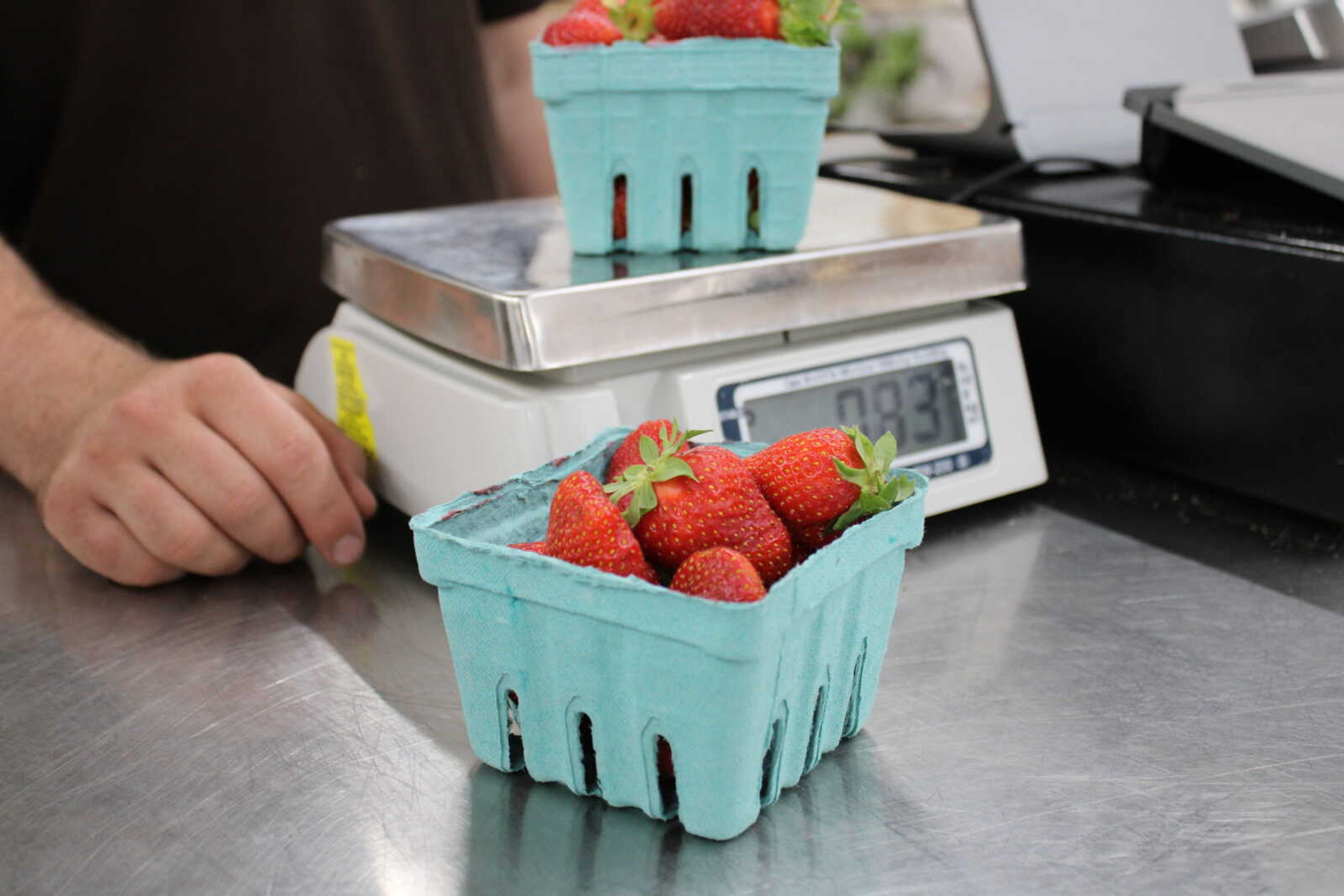SEMO students may be seeing empty shelves at the grocery store where strawberries would usually be stocked. Stores, restaurants and farms are struggling with shortages after rains flooded many of the strawberry fields in California throughout March and April.
Extreme rains after years of drought and spring snowmelt overwhelmed parts of California’s flood management infrastructure. The Red Cross expects flooding to continue.
California is home to more than 90% of the strawberry harvest in the United States, according to the USDA.
Southeast Missouri suppliers are finding their own ways to weather the storm.
Job Green supplies his family’s Cape Girardeau restaurant, Spanish Street Farmacy, with most of the produce they need from his farm, Green’s Garden.
Green reduces the risk of large-scale damage, as happened in California, with “caterpillar tunnel” greenhouses.
“It does help with winter, as far as keeping an additional couple of degrees of warmth,” Green said. “But primarily, it’s keeping heavy spring rains off of these delicate crops.”
Spanish Street Farmacy has not yet felt the pain of the shortage, Green said. They receive their strawberries from a local Mennonite community between Farmington and Fredericktown, Mo.
“They have 1,000 acres. No electricity, no cars, but they are some of the most slamming farmers that you’ll find,” Green said.
Despite strawberries not being in season in Missouri until May, Green’s sources have methods of delivering sooner.
“These strawberries that we’ve been getting come from another unheated greenhouse, so it’s three or four weeks early, earlier than most people can grow field strawberries,” Green said.
Local sourcing has insulated Spanish Street Farmacy from other types of shortages, as well. According to Green, mass produce recalls are often caused by pollution from other industrial farms.
“A lot of farms are situated proximate to large, confined animal-feeding operations,” Green said. “So, there will always be fear of runoff, and that’s where E. coli gets into the food chain.”
As with most produce in the US, strawberries are grown by a few massive farms.
Green has multiple redundancies in his supply chain to avoid shortages.
“I have my back-up, then I have my back-up’s back-up. It’s good to have dependable, local producers. There are challenges, and [the local food scene] is in its early stages of growth,” Green said. “It’s very much worth it.”
Local bakery Bon Bon’s of Cape Girardeau has had a different experience. Fresh strawberries are essential to their menu, according to Stephanie Rivas, an employee at Bon Bon’s.
“We’ve moved from using fresh strawberries to frozen berries or preserves,” Rivas said.
Rivas has more than 10 years’ experience with food supply and has seen changes since the COVID-19 pandemic.
“I was a restaurant manager at Outback for a couple of years. We were known for blooming onions, and they were coming in black at the center, because it took too long for them to come our way,” Rivas said.
Rivas had to stop serving the blooming onion dish because altering the recipe was against corporate standards.
“In these little mom and pop shops, even though it does hurt, there are more creative ways of dealing with shortages,” Rivas said. “We’ve added blueberries and raspberries into our fruit and walnut salad.”
According to agriculture professor Sven Svenson, it’s the farmers who carry the largest financial burden during a shortage. Retailers can increase prices, but farmers are often locked into a pricing contract, regardless of supply and demand.
“The farmer takes a double hit,” Svenson said. “It’s all expense and no profit.”
Supporting local farms can reduce the impact of food shortages, Svenson said. They can act as a safety net when larger suppliers are impacted.
“Long supply chains are easily broken,” Svenson said. “Additionally, fewer food miles mean less fossil fuel usage, reducing the impact of global climate change.”
COVID-19 has had a steep impact on medium-sized farmers, Svenson said.
“The pandemic made us realize we were vulnerable, but it wiped some of the supply out permanently,” Svenson said.
To Svenson, the greatest impact on global food supply is war.
“To maintain the food supply, go after peace,” Svenson said.
In the meantime, SEMO students can find alternatives to fresh strawberries on the Foodiosity website.




